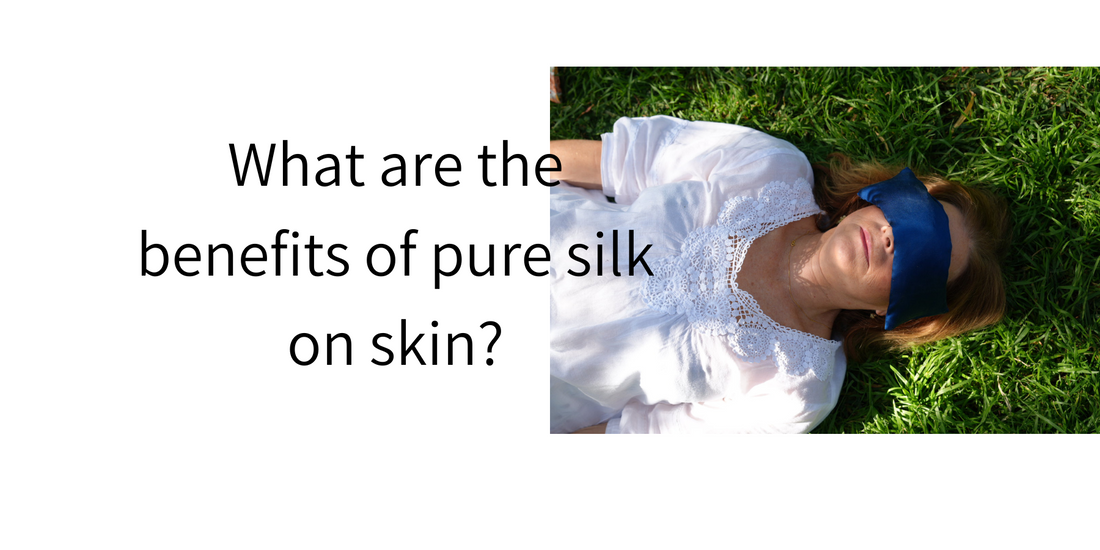I love the opulent, luxurious feel of silk against my skin
Beyond its aesthetic allure, silk boasts health benefits for our skin. Silk is a remarkable fabric. The tiny silkworm creates a fibre. Artisans spin this fibre into beautiful silk. Incredible silk, crafted since ancient times, is revered for its beauty and elegance.Silk fabric production has undergone vast changes in technology. Natural fibres like silk exhibit strength, beauty, and versatility that I find unmatched. There's an incomparable beauty in the sheen of natural silk fabric. Silk moves gracefully while having a cool, soothing touch to the skin. Let's delve into some fascinating facts about silk.
Is silk a natural fibre?
Silk is a protein, spun into fibre and used as a fabric. It has taken millions of years for silk to travel through its evolutionary cycle. The mulberry silkworm has faced 400 million years of biological challenges. Imagine, what they’ve been through!
Is the spiders' cobweb like silk?

Curiosity led me to observe spiders creating intricate webs in my garden at night. I’m not a fan of spiders but, they are amazing artists creating a strong thread to catch their dinner. If the cobweb comes down the next day, they make it again in the evening. Spiders make silk too, but harvesting it on a commercial scale is impractical. Spiders are territorial in nature and some even have cannibalistic tendencies.
In my lavender eye pillows, I use mulberry silk. It’s a fine silk spun by silkworm Bombyx mori. This silkworm feeds on mulberry leaves.
There are other wild silks produced from silkworm genus called Tussar, Eri and Muga. Mulberry silk is the most common and available natural silk fibre used today.
Manmade v Natural Silk
Manmade silk fibre is also available but isn’t quite as beautiful to me as the natural silk fibre. 100% silk has a high cost on the Market. Pure silk cloth has a gorgeous shimmer, is light but tough and long wearing. It will last for ages when washed in cold water and wool wash, gently rinse and wring out in the shade. It feels soft against my skin and is luxurious.
How can I tell the difference?
To discern between the two, I use the burn test. Synthetic silk will burn and melt in a similar way to when a piece of plastic burns. It will shrivel up and is easier to catch alight. Pure silk, when burned, resists catching alight and emits a scent akin to burning hair. In contrast, synthetic silk will burn and melt like plastic. It will burn with a noticeable difference in smell and appearance.
Learning from nature
Scientists have imitated nature by creating amazing materials. Kevlar is manmade. It is strong and used in tyres and other mechanical applications. Silk fibres are strong for their weight, but light. Kevlar is synthetic while silk is natural and produced by silkworms. Each has its own advantages and purpose. It's interesting to look at nature and learn.
Shhh, it's a secret
The making of silk was a guarded secret in China. The secret of silk production spread to India in 300 AD. Today, mechanised silk processing has come a long way. Producing silk remains labour-intensive. Due to innovation and knowledge sharing, silk can be bought from specialised stores. 100% natural silk is quite expensive to buy.
Lots of choice
There are many different types of silk available to sew garments. Some include crepe di chin, georgette and organza. They have different uses depending on the texture and weight of the fabric. I use a medium weight 100% silk for my eye pillow slip. This gives a beautiful feel and shimmer for the pillow slip. It is sturdy enough to insert a pillow filled with linseed and lavender. The cool slip feels gorgeous against my eyes. My handmade eye pillows with lavender are perfect for massage, meditation and relaxation. Try it as a yoga pillow, meditation pillow or for reiki massage.
Studies have shown
A study on the clinical effectiveness of silk fabric in treating atopic dermatitis helps us to understand the benefits of silk.The benefits of wearing pure silk go beyond their sheer beauty. This study shows that silk may assist with serious skin conditions. Silk fibres' smooth and soft texture is gentle on the skin. Silk can help to reduce irritation compared to other rough textured fabrics.
Back to school
When I was young we searched for local mulberry trees to eat ripe mulberries. We would wash and eat them, getting purple and messy in the process. Who could argue with free berries to eat? My school friends would bring mulberry leaves with silkworms to school to look at. This made the Science class a more interesting way to learn. We could see the stages of the silkworm growing from:
The silk road history was also a fascinating lesson to learn about at school. Today, you can find silk in luxury garments and even in some medical applications.
Pure silk is a natural and gorgeous fabric that I use in my lavender silk eye pillows. I also have organic cotton lavender eye pillows. And soon to come, organic rose petal silk eye pillows made in cream silk.
Caring and sharing
If this blog has sparked your interest, consider sharing it with a friend. I'd love it if you could explore my range of skincare, textiles, and candle products too.

